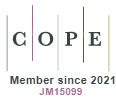Żółtlice, kolczurki, niecierpki i inne rośliny inwazyjne w Szadku
DOI:
https://doi.org/10.18778/1643-0700.12.06Abstrakt
Invasive alien plants are harmful non-native plant species whose introduction or spread threatens the environment, the economy, and society, including human health. They can be introduced from other continents or from one region of the same continent to another. The kenophytes are alien plants introduced to Europe after 1492. As much as 46 kenophytes have been recorded in Szadek (in years 2003-2009), what is almost 10% of the flora of the city (in total: 502 vascular plant species ). The most of "aliens" originate from the New World- from eastern and northern North America (22 species), and from northem South America and Central America (3). The species introduced from south-western, western or form central parts of Asia (19) and/or from southem, south-eastern or eastern Europe (18) are the next important group of alien plants. 27 species appear to have arrived in Europe and in Poland through intentional introductions (as ornamentals, melliferous plants, as agricultural crop etc.). The others (19 species), now recognized as weeds, have been introduced for research or as botanical curiosities (and escaped from botanical collections, gardens etc.) or they were unintentionally brought with other plant products, packing material or in ballast soil. About 70% of noted kenophytes are recognized as invasive in Poland. Some of them, e.g. “Impatiens parviflora” and “Galinsoga parviflora”, are already widespread in Szadek and poses threat native biodiversity. The others, e.g. “Echinocystis lobata” or “Reynoutriajaponica”, are rarely noted, but the growing awareness of the threats posed by these species as well as of possible risk of their invasiveness, require monitoring of localities and active prevention of their further spread.
Bibliografia
DAISE (Delivering Alien Invasive Species Inventories for Europe), http://www.europealiens.org
Google Scholar
Dajdok Z., Niecierpek gruczołowaty Impatiens glandulifera, [w:] Inwazyjne gatunki roślin ekosystemów mokradlowych Polski, red. Z. Dajdok, P. Pawlaczyk, Świebodzin 2009, s. 42-45.
Google Scholar
Dajdok Z., Pawlaczyk P. (red.), Inwazyjne gatunki roślin ekosystemów mokradłowych Polski, Świebodzin 2009.
Google Scholar
Ecology of Weeds and Invasive Plants. Relations hip to Agriculture and Natura/ Resource Management, eds. S. R. Radosevich, J. S. Holt, C. M. Ghersa, Hoboken 2007. Elton Ch., Ekologia inwazji zwierząt i roślin, Warszawa 1967.
Google Scholar
Faliński J. B., Inwazje w świecie roślin, ,,Phytocoenosis. Seminarium Geobotanicum" 2004, vol. 16 (N.S.), z. 10, s. 1-31.
Google Scholar
Faliński J. B., Neofity i neofityzm. Dyskusje fitosocjologiczne (5), ,,Ekologia Polska" 1969, ser. B, z. 15 (4), s. 337-354.
Google Scholar
GISP (Global Invasive Species Database) http://www.issg.org/database
Google Scholar
Heywood V., Brunel S., Kodeks postępowania w zakresie ogrodnictwa i inwazyjnych roślin obcych. Konwencja o ochronie gatunków dzikiej flory i fauny europejskiej oraz ich siedlisk naturalnych (Konwencja Berneńska), ,,Przyroda i Środowisko" nr 155, s. 1-52, Publikacje Rady Europy z załącznikami.
Google Scholar
Jackowiak B., Modele ekspansji roślin synantropijnych i transgenicznych, ,,Phytocoenosis. Seminarium Geobotanicum" 1999, vol. 11 (N.S.), z. 9, s. 1-24.
Google Scholar
Konwencja o Różnorodności Biologicznej (Convention on Biologica! Diversity, CBD), przyp. 57, zał. z 2002 r. http://www.cbd.int/
Google Scholar
Kornaś J., Geografia roślin, Warszawa 2002.
Google Scholar
Król S., Dąb czerwony - Quercus robra L. w warunkach środowiska leśnego zachodniej Polski, ,,PTPN. Prace Kom. Nauk Roln. i Kom. Nauk Leśn." 1967, z. 21, s. 419-482.
Google Scholar
Matuszkiewicz W., Przewodnik do oznaczania zbiorowisk roślinnych Polski, Warszawa 2006.
Google Scholar
NOBANIS (The North European and Baltic Network on Invasive Alien Species) http://www.nobanis.org
Google Scholar
Obce gatunki w Polsce http://www.iop.krakow.pl/ias
Google Scholar
Reichard S. H., White P., Horticulture as a Pathway of Invasive Plant Introductions in the United States, ,,BioScience" 2001, vol. 51, s. 1103-1113.
Google Scholar
DOI: https://doi.org/10.1641/0006-3568(2001)051[0103:HAAPOI]2.0.CO;2
Richardson D. M., Pysek P., Rejmanek M., Barbour M.G., Panetta D. D., West C. J., Naturalization and Invasion of Alien Plants: Concepts and Definitions, ,,Diversity and Distributions" 2000, vol. 6 (2), s. 93-107.
Google Scholar
DOI: https://doi.org/10.1046/j.1472-4642.2000.00083.x
Rozporządzenie Ministra Środowiska z dnia 9 września 20llr. w sprawie listy roślin i zwierząt gatunków obcych, które w przypadku uwolnienia do środowiska przyrodniczego mogą zagrozić gatunkom rodzimym lub siedliskom przyrodniczym, Dz. U. 2011, nr 210, poz. 1260.
Google Scholar
Sudnik-Wójcikowska B., Koźniewska B., Słownik z zakresu synantropizacji szaty roślinnej, Warszawa 1988.
Google Scholar
Suwara-Szmigielska S., Flora roślin naczyniowych małych miast zachodniej części województwa łódzkiego, praca doktorska, Katedra Geobotaniki i Ekologii Roślin Uniwersytetu Łódzkiego, Łódź 2010, s. 274 + Atlas rozmieszczenia gatunków, t. 1-2.
Google Scholar
Śliwiński M., Barszcz Sosnowskiego Heracleum sosnowskyi i barszcz Mantegazziego Heracleum mantegazzianum, [w:] Inwazyjne gatunki roślin ekosystemów mokradłowych Polski, red. Z. Dajdok, P. Pawlaczyk, Świebodzin 2009, s. 54-57.
Google Scholar
Tokarska-Guzik B., Globalizacja w świecie roślin zagrożeniem dla bioróżnorodności, [w:] Problemy środowiska i jego ochrony, red. M. Nakonieczny, P. Miguła, Centrum Studiów nad Człowiekiem i Środowiskiem, Uniwersytet Śląski, Katowice 2009, s. 93-110.
Google Scholar
Tokarska-Guzik B., The Establishment and Spread of Alien Plant Species (Kenophytes) in the Flora of Poland, Katowice 2005.
Google Scholar
Tokarska-Guzik B., Bzdęga K., Tarłowska S., Koszela K., Gatunki z rodzaju rdestowiec Reynoutria spp., [w:] Inwazyjne gatunki roślin ekosystemów mokradłowych Polski, red. Z. Dajdok, P. Pawlaczyk, Świebodzin 2009, s. 94-99.
Google Scholar
Tokarska-Guzik B., Koszela K., Program zwalczania inwazyjnych gatunków z rodzaju Reynoutria na obszarze ostoi siedliskowej Natura 2000 „Graniczny Meander Odry", [w:] Inwazyjne gatunki roślin ekosystemów mokradłowych Polski, red. Z. Dajdok, P. Pawlaczyk, Świebodzin 2009, s. 132-137.
Google Scholar
Tokarska-Guzik B., Urbisz A., Urbisz A., Węgrzynek B., Nowak T., Pasierbiński A., Regional Scale Assessment of Alien Plant Invasions: A Case Study for the Silesian Up/and (Southern Poland), [w:] Plant Invasions: Human Perception, Ecological Impacts and Management, eds. B. Tokarska-Guzik, J. H. Brock, G. Brundu, L. Child, C. C. Daehler, P. Pysek, Leiden 2008, s. 171-188.
Google Scholar
Zając A., Zając M., Tokarska-Guzik B., Kenophytes in the Flora of Poland: List, Status and Origin, ,,Phytocoenosis. Supplementum Cartographiae Geobotanicae" 1998, vol. 9, s. 107-115.
Google Scholar
Pobrania
Opublikowane
Jak cytować
Numer
Dział
Licencja

Utwór dostępny jest na licencji Creative Commons Uznanie autorstwa – Użycie niekomercyjne – Bez utworów zależnych 4.0 Międzynarodowe.









